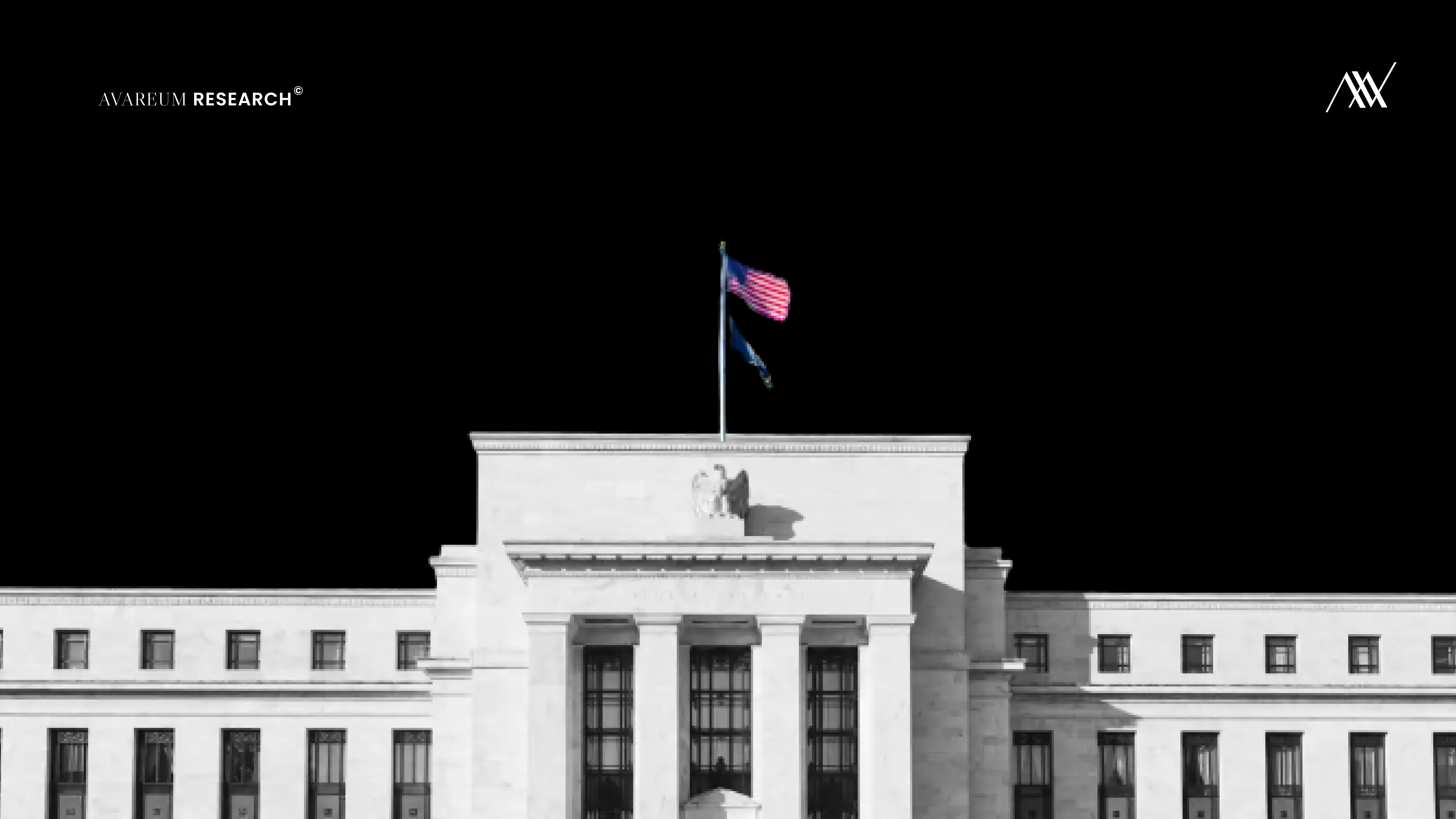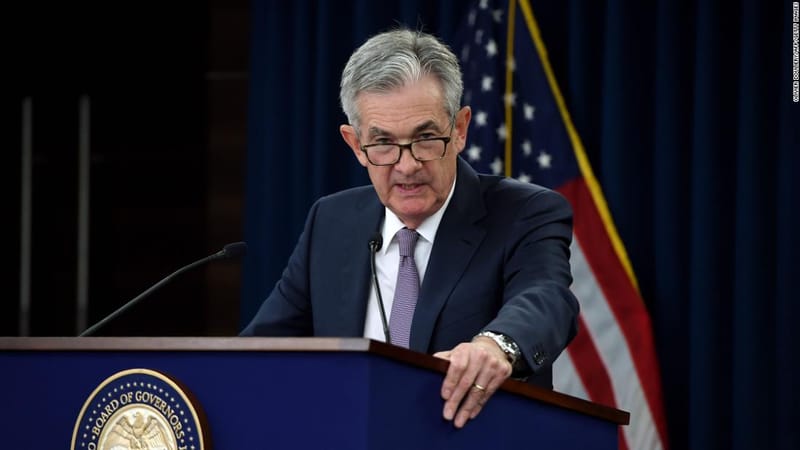U.S. Fed’s Balance Sheet Shrinking Explained

This article is bilingual, you can read the Thai version below.
Over the past years since subprime, the U.S. economy has been rescued by the Fed’s quantitative easing (QE) to survive the worst recession in several decades. Every time FED prints the new money, its balance sheet has grown dramatically in size. (Imagine one company with a balance sheet of $10m. Then the company magically prints the new $20m out of thin air; its balance sheet will grow to $30m all of a sudden.)
But those printed QEs do not feed through to the broader real economy. A significant portion of QEs has bought the U.S. Treasuries. (Let’s say cash in the FED’s balance sheet will be converted into U.S. Treasury bonds.) After all, we can say that the U.S. central bank is the largest U.S. government creditor, holding about $5.18 trillion in Treasury bonds.
And another portion of QEs has bought mortgage-back securities (MBS) of U.S. too-big-too-fail big banks. With the hope that those big banks will loan that money to consumers and businesses to support a continuous flow of credit and liquidity to the real sectors, which, as we knew, they fail us.
FED declares to start tapering its balance sheet, which means selling off its U.S. Treasuries holdings and MBS to somebody and get the cash back to the balance sheet and finally burn them out of the balance sheet after all. In the end, money printed out of thin air will be evaporated into the atmosphere.
In 2021, the FED’s balance sheet topped $8 trillion for the first time, with $5.18 trillion in U.S. Treasuries and $2.3 trillion in MBS. But the critical point is that who will be the buyers of these debts? In layman’s terms, FED is saying out loud, “I do not want to be your creditor anymore, anybody, please take over those debts and accept the U.S. government as your debtor.”

Yes, I knew a lot of people trust U.S. Treasury bonds as a safe haven. But the ongoing threat of interest rate rises will pressure the price of the pre-existing Treasury bonds.
To attract demand, the price of the pre-existing bond would have to decrease enough to match the same return yielded by prevailing interest rates. For example, newly issued bonds were offering a yield of 3%, then the pre-existing bond yielding 2% would be much less attractive. Who wants a 2% yield when they can get 3%?
Hence, if FED wants to sell off their Treasury holdings in the rate rising period, those Treasury bonds are needed to be issued at a discount to par value to attract buyers. However, FED will not sell all of its Treasury holdings. Some of the Treasuries will be expired as scheduled, and FED will simply not roll over those bonds and lets the U.S. government find other buyers for newly issued bonds on its own.
FED had problems at home as one of the biggest creditors to the U.S. Government in the past few years. Someone might think the U.S. economy has been recovering since then, so they are not seriously worrying. But the fact is that they were wrong; the U.S. economy has not been recovered without raising the U.S. Government debt ceiling each year.
And congratulations, today FED is the biggest creditor of the U.S. Government with $5.18 trillion of debt, followed by the U.S. Social Security trust fund with $2.xx trillion.
At some point, the U.S. debt ceiling will be raised once again. How long before investors realize the fact and lose confidence in that unlimited debt printing machine called the U.S. Government?
Three of the biggest creditors of the U.S. Government started to unload U.S. Treasuries.
- FED — If the balance sheet’s tapering is real, they will not buy more U.S. Treasuries and let the existing ones expire.
- Social Security Trust Fund — they are starting to have a problem with U.S. Treasuries because of their low yield. At this rate, Social Security Trust Fund will run out of money and will be insolvent in our lifetime. (A case study of GPIF, Japan’s biggest pension fund, changed its policy of re-allocating 25% to stocks inside and outside Japan and cutting domestic bonds from 60% to 35%.)
- China — as we knew, has never been happy with holding the U.S. Treasuries and always looking for a way to unload U.S. Treasuries holding in its portfolio.
The big question is that who will be the next U.S. Government’s creditors? (Japan, maybe?) If no one wants to be, the Sovereign debt crisis might arrive sooner than we expected.
In conclusion, with many risks ahead, I do not believe FED can shrink its balance sheet in this pandemic period when the U.S. Government needs massive fiscal stimulus. But for raising rates, it’s possible.
No one can create unlimited liabilities. The U.S. is not exempt.
ในช่วงหลายปีที่ผ่านมา FED ได้ทำ QE (พิมพ์เงิน) จำนวนมากเพื่อยื้อชีวิตเศรษฐกิจสหรัฐหลังวิกฤติ subprime เมื่อ FED พิมพ์เงินออกมานั้น แปลว่าทุกครั้งที่พิมพ์เงิน งบดุลของ FED ก็จะโตขึ้น (คิดภาพบริษัทนึงมีสินทรัพย์ 10 ล้านบาท ถ้าจู่ๆ บริษัทนั้นเสกเงินขึ้นมาได้อีก 20 ล้าน สินทรัพย์ของบริษัทนั้นก็จะเพิ่มเป็น 30 ล้าน)
แต่เงินที่พิมพ์ออกมานั้นแทบไม่ได้เข้าถึง real sector เลย
เงินส่วนหนึ่งที่พิมพ์ออกมา FED เอาไปซื้อพันธบัตรสหรัฐ หรือพูดง่ายๆ ก็คือ FED เป็นเจ้าหนี้รัฐบาลสหรัฐ (นั่นคือเงินสดในงบดุลจะกลายเป็นพันธบัตรสหรัฐแทน)
เงินอีกส่วนเอาไปซื้อ MBS (mortgaged back securities) ซึ่งก็คือหนี้เน่าของแบงค์ตั้งแต่ยุค subprime ด้วยความหวังที่แบงค์จะเหลือสภาพคล่องที่จะไปปล่อยกู้ให้ระบบเศรษฐกิจ
ดังนั้นการที่ FED ออกมาบอกว่า จะลดงบดุลของ FED ลง ก็คือการที่ FED จะต้องขายทั้งพันธบัตรและ MBS ออกไป พอได้เงินสดกลับมาก็ดูดเงินสดออกจากงบดุลด้วยวิธีการของธนาคารกลาง เงินที่เคยเสกมาได้ในอากาศ ก็จะสูญสลายหายไปในอากาศ
ตอนนี้งบดุลของ FED มีขนาดใหญ่โตมหึมาถึง $8 ล้านล้าน แบ่งไปถือพันธบัตรสหรัฐ $5.18 ล้านล้าน และถือ MBS อยู่ $2.3 ล้านล้าน

ประเด็นสำคัญก็คือ ถ้า FED ต้องขายพันธบัตรสหรัฐกับ MBS ทิ้งไป (พูดภาษาชาวบ้าน คือโอนลูกหนี้ให้คนอื่น กรูไม่ขอเป็นเจ้าหนี้มึงแล้ว) ใครจะเป็นคนรับซื้อหนี้พวกนี้..?
แน่นอนว่ามีคนจำนวนมากยังเชื่อถือพันธบัตรสหรัฐว่าเป็น safe haven อยู่ แต่แนวโน้มอัตราดอกเบี้ยขาขึ้น จะทำให้ผู้ซื้อกดราคาพันธบัตรลงไปอีก
เช่น ถ้ามีเพื่อนจะโอนหนี้ให้คุณ 100 บาท โดยคุณจะได้รับดอกเบี้ย 2% ต่อปี แต่ถ้าคุณรู้ว่าเดือนหน้าดอกเบี้ยธนาคารจะเพิ่มเป็น 3% คุณเอาเงินให้เพื่อนหรือเอาเงินไปฝากธนาคาร ถ้าคุณจะรับโอนหนี้จากเพื่อนของคุณ คุณก็จะต้องกดราคาว่าคุณจะรับซื้อหนี้นี้ในราคาไม่เกิน 65 บาท (2/65 = 3% งงมั้ยครับ)
กลับมาเรื่องของ FED คือถ้า FED จะขายพันธบัตรทิ้งในช่วงอัตราดอกเบี้ยขาขึ้น FED ก็จะต้อง discount ราคาพันธบัตรมากเป็นพิเศษ เพื่อให้คนรับซื้อได้ผลตอบแทนสูงพอที่เค้าจะรับซื้อหนี้ต่อ
เมื่อเกิดสถานะการเทขายพันธบัตรจำนวนมากจาก FED ตามทฤษฏีแล้ว yield พันธบัตรจะเพิ่มสูงขึ้นตามกลไกตลาดที่ผมอธิบายให้ฟังในข้างต้น
แต่ FED คงไม่ได้ขายพันธบัตรทั้งหมด พันธบัตรบางส่วนก็จะหมดอายุตามกำหนดไปส่วนหนึ่ง FED ก็แค่ไม่ซื้อเพิ่ม งบดุลก็จะลดลงได้เองอย่างช้าๆ
(แต่รัฐบาลจะหาเงินมาคืนได้มั้ย จะหาเงินมาคืนได้ก็อาจจะต้องออกพันธบัตรใหม่ให้คนอื่นมาซื้อ แล้วใครจะซื้อถ้าไม่ใช่ FED..? อันนี้ไม่ใช่ประเด็นในบทความนี้นะครับ)
ที่ผ่านมา FED คือเจ้าหนี้ใหญ่ของรัฐบาลสหรัฐมาโดยตลอด หลายคนอาจจะคิดว่าเศรษฐกิจสหรัฐฟื้นแล้ว แต่อัตราความเร่งในการสร้างหนี้ของรัฐบาลไม่ได้ลดลงเลย หลัง Covid ตอนนี้ FED แซงมาเป็นเจ้าหนี้อันดับ 1 ของรัฐบาลสหรัฐเรียบร้อยด้วยขนาดหนี้ $5.18 ล้านล้าน ในขณะที่อันดับสองคือกองทุนประกันสังคมที่ขนาดหนี้ประมาณ $2.xx ล้านล้าน
ถึงจุดหนึ่งเพดานหนี้ของรัฐบาลสหรัฐก็จะทะลุอีกครั้ง นักลงทุนจะเชื่อมั่นในรัฐบาลสหรัฐไปได้อีกนานแค่ไหน..?
เมื่อเจ้าหนี้ของสหรัฐที่ใหญ่ที่สุด 3 อันดับ เริ่มไม่โอเคกับพันธบัตรสหรัฐ
เจ้าหนี้อันดับที่ 1 FED ซึ่งถ้า FED จะลดขนาดงบดุลจริงๆ ก็คงจะไม่ซื้อพันธบัตรสหรัฐเพิ่มแล้ว และพันธบัตรเดิมๆ ก็จะทยอยหมดอายุไปเรื่อยๆ
เจ้าหนี้อันดับที่ 2 กองทุนประกันสังคม ตอนนี้กองทุนประกันสังคมไม่อยากถือพันธบัตรสหรัฐ เพราะผลตอบแทนไม่พอที่จะทำให้กองทุนประกันสังคมรอดได้ (กรณีศึกษานี้เกิดขึ้นแล้วที่กองทุนประกันสังคมของญี่ปุ่นขายพันธบัตรรัฐบาลญี่ปุ่นไปให้ BOJ แล้วไปถือหุ้นแทน เพราะถือพันธบัตรนานๆ ผลตอบแทนแย่ กองทุนจะเจ๊งเอาได้)
แถมจีน ซึ่งเป็นเจ้าหนี้อันดับ 3 ก็ไม่เคยมีความสุขกับการถือพันธบัตรสหรัฐอยู่แล้ว หาทางทิ้งพันธบัตรสหรัฐอยู่ตลอด
คำถามคือ ใครจะยอมให้สหรัฐกู้อีก..? (หวยอาจจะออกที่ญี่ปุ่นเจ้าหนี้อันดับ 4 อาจจะโดนหักคอให้ช่วยอุดหนุน)
เมื่อนั้นวิกฤติพันธบัตรสหรัฐ (Soverign Debt Crisis) อาจจะมาถึงเร็วกว่าที่คาด
ดังนั้น ในภาวะที่ภาครัฐยังต้องใช้เงินอัดฉีดอย่างหนักในช่วง Covid ผมไม่คิดว่า FED จะสามารถลดงบดุลหรือ QE Tapering ได้จริง การขึ้นดอกเบี้ยอาจจะพอเป็นไปได้ แต่การดึงเงินกลับ ต้องมาคอยดูกันว่า FED จะทำได้จริงแค่ไหน
แต่ไม่มีใครในโลกนี้ที่สร้างหนี้ไปได้เรื่อยๆ แบบไม่มีที่สิ้นสุดหรอกครับ ไม่เว้นแม้แต่ประเทศสหรัฐอเมริกา
Disclaimer: Avareum Research is an independent crypto research firm committed to providing unbiased and informative content. While we strive for complete objectivity, it's important to note that the research industry is inherently complex and may be influenced by various factors. To ensure transparency, we disclose any potential conflicts of interest, such as financial sponsorships or investments in the crypto space. Ultimately, all research and analysis provided by Avareum Research is intended for informational purposes only and should not be considered financial advice. Please consult with a qualified professional before making any investment decisions.
© 2024 Avareum Research. All Rights Reserved. This article is provided for informational purposes only. It is not offered or intended to be used as legal, tax, investment, financial, or other advice.




